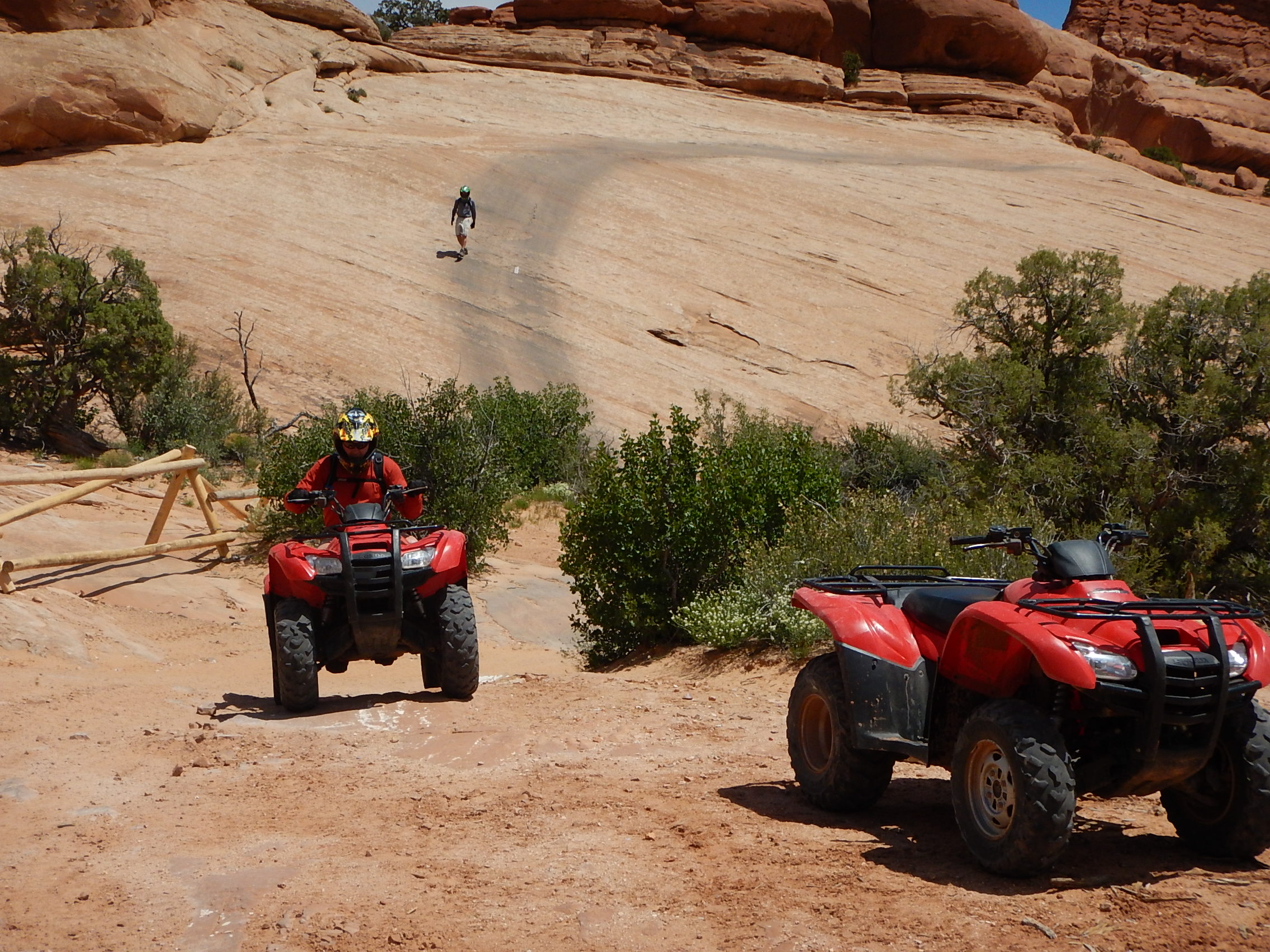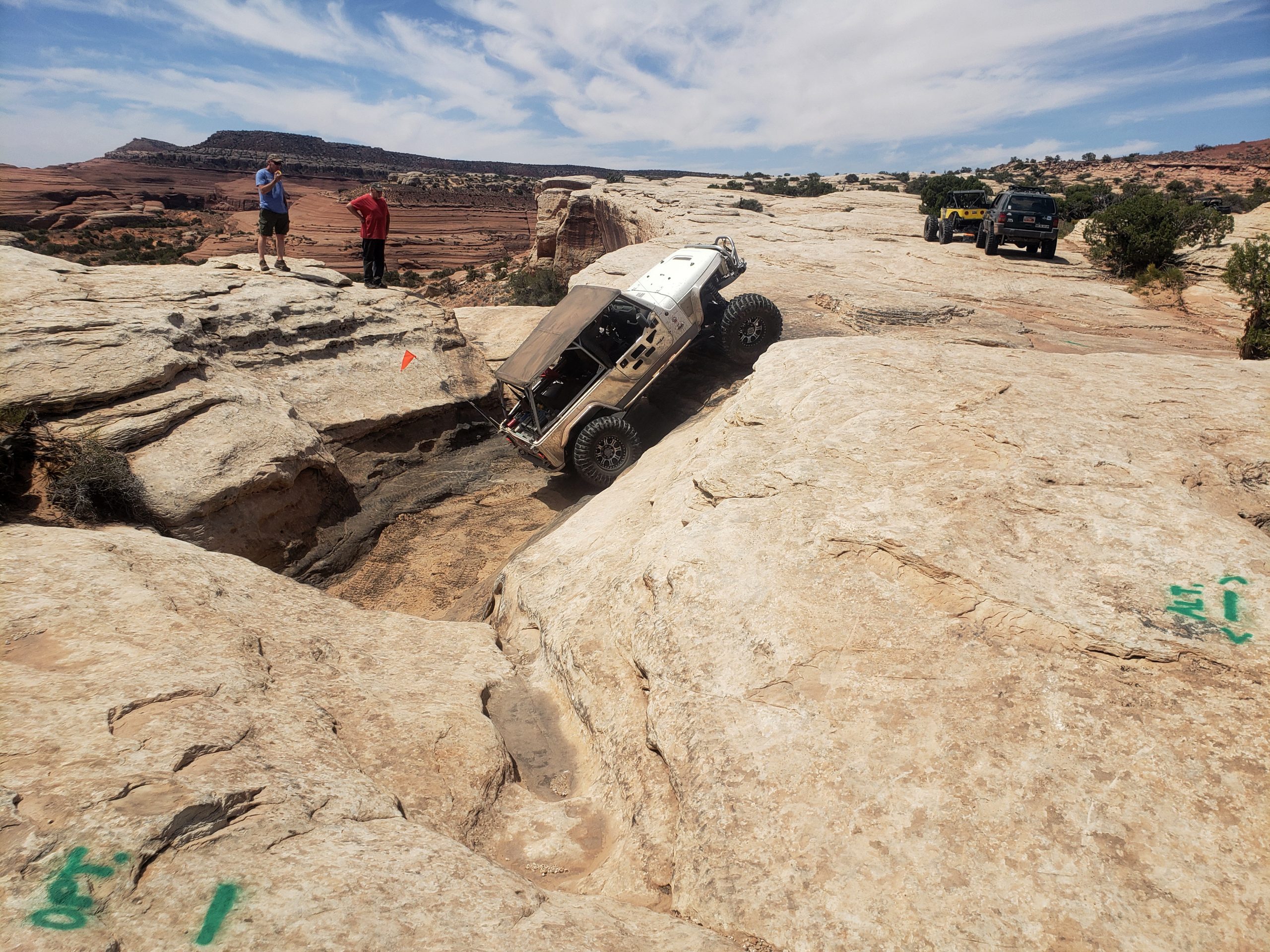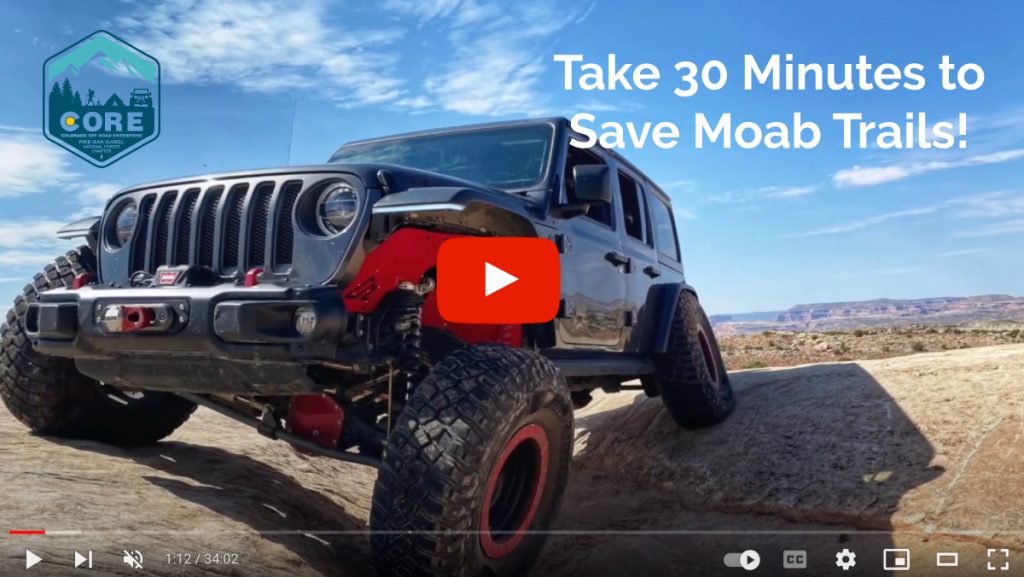

Extensive closures are proposed to world-class trails in the Labyrinth Rims and Gemini Bridges area.
The BLM needs your input to protect them!
– Comments are due Friday, October 7th –
– Comments are due Friday, October 21st –
Ride with Respect, Trails Preservation Alliance, and Colorado Off Road Enterprise urge you to weigh in so we don’t lose out!
What’s going on?
The Bureau of Land Management (BLM) Moab Field Office has released a Draft Environmental Assessment (The Proposal) for its Travel Management Plan (TMP) covering all motorized routes between Moab and Green River, Utah that could close 40% of what is currently open to motorized use. Proposed closures include all of Dead Cow Loop (The Tubes), parts of Enduro Loop, Brian’s Trail (top of White Wash), Gold Bar Rim, Golden Spike, Rusty Nail, Tenmile Canyon, Hey Joe Canyon, Hell Roaring Canyon, Mineral Canyon, Tusher Wash, and the route between Monitor and Merrimac buttes to name a few!
The Labyrinth Rims/Gemini Bridges planning area is surrounded by national parks, wilderness study areas, and the new Labyrinth Canyon Wilderness just across the Green River. Within the planning area, the 2008 TMP inventoried ~1,900 miles of routes and closed ~800 miles of them, leaving ~1,100 miles open today, which the Draft TMP calls Alternative A. Volunteers (including local groups Ride with Respect, Moab Friends For Wheelin’, and Red Rock 4-Wheelers) have spent tens-of-thousands of hours implementing and refining the 2008 TMP in this area. A 2017 settlement agreement requires the BLM to revisit the 2008 TMP in this area, and expressly allows the BLM to add routes, but the agency has chosen not to consider adding even a single mile of route in The Proposal despite that motorized use of the area has roughly doubled since 2008.

Dead Cow/Tubes – a route that is proposed to be closed
It is widely agreed that the BLM should extend the comment deadline because some of its maps were inaccurate at the outset of The Proposal, but the following figures are accurate within a few miles:
- Alternative A would leave open 1,057 miles to all uses and 71 miles to ATVs and/or motorcycles.
- Alternative B would close 438 miles and place new restrictions on another 13 miles.
- Alternative C would close 168 miles and place new restrictions on another 50 miles.
- Alternative D would close 53 miles and place new restrictions on another 30 miles.
It’s worth noting some closures proposed in Alternative D are reasonable, but others have current and future value to leave open despite the appearance of low use. Southern Utah Wilderness Alliance (SUWA), which seeks to vastly expand wilderness designation that prohibits all mechanized travel, proclaims “It is vital that the BLM hear overwhelming public support for Alternative B,” an alternative developed at the request of all Grand County commissioners. Therefore it’s vital that the BLM hear our overwhelming OPPOSITION to Alternative B as it (and even parts of Alternative C) would devastate motorized recreation and offer no significant benefit to non-motorized recreation or natural resources.
Check out this informative video from CORE!
How to Comment Effectively
Check out this new video from Chad of TPA and Marcus of CORE sharing how to make your comments most effective.
To comment substantively on The Proposal, include these points in your own words.
Tell the BLM about yourself:
- Who you are, where you’re from, what activities you enjoy in the Labyrinth Rims/Gemini Bridges planning area, and how much money you spend locally when visiting (dining, recreational equipment, hotels, fuel, etc).
- Emphasize if you are a multi-use recreationist. Include all the activities you enjoy in the area, and what characteristics you look for in a route.
Examples: floating Labyrinth Canyon by raft or canoe, riding your dirt bike on Dead Cow, 4WD on Hey Joe, mountain bike on the Magnificent Seven. - The variety of benefits that the area’s motorized routes provide to you (exercise, thrill-seeking, skill building, family time, connection with nature, etc.).
- That you support the comments submitted by local, state, and national groups (RwR, CORE, TPA, etc).

Taylor Canyon – a route that is proposed to be closed
Then ask the BLM to:
- Support Alternative A. In 2008 the TMP closed over 40% of inventoried routes plus around 200 miles of non-inventoried routes, thereby balancing motorized recreation with non-motorized recreation and natural resources. This is especially worth noting given the significant amount of non-motorized opportunities that surround this planning area.
- Recognize that the State of Utah is increasing its support of trail work, education, and law enforcement in the planning area. The new DNR Division of Outdoor Recreation is hiring staff to do more trail work and enforcement patrols specifically in southeast Utah. Further, Utah’s new Off-Road Vehicle Safety Education Act will require (a) all OHV operators to complete an education course, (b) all ATVs to display license plates for easier identification, and (c) vehicle operators who are convicted of going off-trail to repair their damage through community service. With these additional resources, the BLM will be able to effectively implement alternative A and resolve any issues with the status quo.
- Take an educational approach to reduce recreation conflicts. Separating trail uses is appropriate to some degree, but additional closures should be thoughtfully evaluated. The BLM should promote education and trail etiquette efforts before resorting to hundreds of miles of closures, especially considering the recent surge in users who are new to backcountry trails. In addition, the promotion of tolerance among diverse recreationists will help alleviate user conflicts.
- Protect wildlife by gaining full compliance with the current TMP. Wildlife enhances all recreational experiences. To effectively improve wildlife habitat, the BLM should focus on the enforcement of existing closures rather than expanding closures and adding to the burden of implementing and enforcing them.
- Fully value the economic contribution of motorized trail use. The Proposal lacks evidence for its assumption that all types of visitors spend similar amounts of money to recreate in the area. Research demonstrates that most motorized trail users spend far more than other recreationists. For example, rental OHVs average $300 per day plus a tax rate of over 18% in Moab while most non-motorized gear rental is under $100 per day, plus a tax rate of under 9%.
- Recognize that closing motorized trails would decrease positive impacts to the local economy and increase negative impacts to natural resources. The Proposal lacks a basis for its assertion that only 7,348 visitor days (20 people per day) would be lost annually if Alternative B were chosen. In fact Alternative B and even some routes in Alternative C would result in either (a) far more visitor days lost, (b) far more traffic on the remaining routes which would make them less sustainable, or (c) far more use off of designated routes which would disorganize travel patterns and increase negative impacts.

Monitor and Merrimac buttes – a route that is proposed to be closed
Finally, make route-specific comments on your favorite trails that are proposed to be closed. You can see all the routes over aerial imagery or topographic base maps by going to the BLM’s ePlanning site, clicking on “Maps,” and going to the section “Interactive Map.” You can see if it would be closed permanently, closed seasonally, or left open year-round in each alternative by going to the section “Static Map.” Determine the route number (e.g. D1944) to state it in your comments, and use it to look at the BLM’s route report (although it’d require downloading all 650MB of route reports).
Make Comments
To comment online and get more information on The Proposal:
Make Comments Here!Email:
If commenting online fails, email the comments with the subject line “Labyrinth/Gemini Bridges Travel Management” to:
blm_ut_mb_comments@blm.gov
Postal mail:
Bureau of Land Management
Attn: Labyrinth/Gemini Bridges Travel Management
82 East Dogwood
Moab, UT 84532

Mashed Potatoes – a route that is proposed to be closed
More Information
- Comments made by Colorado Trail Defenders (COTD) Extensive route-specific comments (large file)
- Final comments sent by the TPA and Ride with Respect on October 21, 2022: Labyrinth Rims/Gemini Bridges Travel Management Plan Comments
Deadline Next Friday!
Comments are due on Friday, October 7, 2022 Friday, October 21, 2022 so speak up for motorized opportunities today!


